All this month, we’ll be helping Children’s Hospital Los Angeles‘ Make March Matter campaign, which aims to raise over a million dollars in March alone for CHLA through the efforts of its corporate partners, among which we are proud to be numbered. Children’s Hospital Los Angeles sees over 528,000 patient visits annually, and is the top ranked pediatric hospital in California by US News & World Report. You can help Make March Matter by simply attending one of the many events or participating in one of the many initiatives being offered by CHLA’s partners (including our event on Saturday, March 25), all listed at www.makemarchmatter.org.
To help remind us all to Make March Matter to support children’s health, we’ve asked all our contributors here at the website to focus on books and comics for kids, or the books or comics that meant the most to them as kids, because we firmly believe that escaping into literature is just as important in keeping children healthy and happy.
Today’s piece is from writer Josh Jabcuga:
Comic-book readers, including writers and artists of all sorts of media, from teenage DIY fanzine publishers to industry insiders—retailers all the way to Hollywood hot shots, usually discovered their passion for comics at a very young age.
Some comic-book fans are lucky and get indoctrinated into the world quicker than others. Perhaps an older brother, who once dabbled in collecting, moved on to chasing girls as his sole focus and passed down his Uncanny X-Men comics to you. Or it was an aunt who spoiled you when she found some back issues of Detective Comics at a yard sale and grabbed the entire stack for a few bucks.
Not all comic-book fans share the same origin story. There are some who take the backstreets and byways before discovering their local comic-book shop or holding their first comic book. Not everyone has a direct route to the source.
I was born in 1977, just a few months after the Blizzard of ’77 had put Buffalo, N.Y., on the map, making it the butt of many lazy jokes, but long before four straight Super Bowl losses (not to mention the city’s unique ties to one of the most controversial court cases of the 20th century, the People of the State of California v. Orenthal James Simpson). President William McKinley was assassinated in September of 1901 in Buffalo (more on that later), but when most people think of Buffalo, they think of losing sports franchises and lake effect snow.
Being a child of the 80s, I might not have had the luxuries of reading comic books on an iPad (if that is your preferred method). I didn’t have instant access to an entire season of Iron Fist to binge-watch on demand on Netflix. To the younger readers out there, I realize this may seem difficult to believe, but my childhood was still quite spectacular. I’m fairly certain the thrill of experiencing my first comic book was equally as intoxicating and magical as the rush you may have felt when you read your first issue, even if that first taste was in the ’90s, the aughts or after. The same case can be made for those of who discovered comics before my generation did.
The single common factor in fandom for all of us, regardless of how old we were when we read our first issue or the decade we became comic book readers, is that someone, or something, led us there, and it kept us coming back for more.
Did you discover comics on your own, or was there something else that acted as a gateway that would lead you down the path to the pure, unfiltered mainline material?
My introduction may have been an indirect one, though no less life-altering. You might describe it with that whole chicken versus the egg conundrum.
There was the public library and the Book-Mobile. Every summer the Book-Mobile (the public library on wheels), would make at least one or two stops at the neighborhood playground.
Whoever came up with that concept should be knighted. The Book-Mobile gave kids access to books who might not otherwise have a way of getting to the library, especially during the months of July and August, when books were often shelved in favor of baseball bats and BMX’s.
When my friends and I would see that Book-Mobile, we’d drop everything for the chance to step aboard and browse the racks. There was one title in particular that I always checked out, which if memory serves me, was about monsters and filmmaking. I’d take that book home and study the black and white photos, in particular those of Godzilla.
How I loved those monsters. Our TV picked up WWOR-TV, channel nine, which seemed to be based out of New York City and thus cater to the Big Apple, but it was a great station because that’s where I stumbled across my first Godzilla TV marathon. I sat transfixed for hours. It wasn’t until the evening that my mother made me turn off the television to come to the table to eat supper, snapping me out of my hypnotic state. But once I discovered Godzilla, I was a goner. His atomic energy fuels me to this day.
CFTO, or CTV, was a channel we picked up out of Toronto, Ontario, Canada. They aired reruns of the 1967 Spider-Man cartoon, and there was nothing better in the world than being home from school (while my older siblings were stuck in classes), having the TV all to myself, and eating a peanut butter and jelly sandwich, watching Spidey do battle with the Green Goblin. That swinging theme song (pun absolutely intended) and the taste of the PJ&J sandwich is a cornerstone of the memory banks of my childhood.
I owe so much to my parents, for always feeding that appetite for reading, and for encouraging me to let my overactive imagination run wild. And boy, was there plenty of room for it to roam.
There was a drive-in two miles from my house, not far from my grammar school and the church. I was the youngest of five, and I vividly remember my parents packing us up in the station wagon and taking me to see Bambi. Even at a young age, I could recognize there was something extraordinary about Bambi and the way it was animated, compared to the choppy Saturday morning cartoons and those I watched religiously after school, like He-Man and the Masters of the Universe, The GoBots, G.I. Joe, and The Transformers.
One of my brothers was a huge fan of the TV show Magnum P.I. and the rock band KISS, and it was at the same drive-in screen that we would later see the movie Runaway. What self-respecting fan of Magnum P.I. and KISS would not convince their parents to take them to see a film starring Magnum’s Tom Selleck as a police officer in the future and KISS’ bass player Gene Simmons as the diabolical baddie? (By the way: Runaway was directed by someone who would years later remind grown men that dinosaurs would always be cool, just in case they forgot what it was like to have the imagination of a five year old. The director was Michael Crichton, who would write the novel Jurassic Park.)
I’m not sure what my brother thought of the film that had both of his heroes, but I know who the real winner was in the scenario: me. Killer robotic spiders programmed to kill by Gene Simmons, on a drive-in screen, way past my bedtime? The stuff dreams are made of.
Can movies and comics books and music have a negative effect on the impressionable minds of our youth? Personally I think it’s a bunch of bull.
My brother never pursued being a bass player in a rock band or attempted to design and program killer robotic spiders. Years later, though, he would have a decorated career in law enforcement. And in a strange coincidence, on my journey to become a professional writer, I would find myself traveling to the west coast for the first time, to attend the San Diego Comic-Con. It was there, one night in a hotel lobby, I would cross paths with Gene Simmons, who talked with me for a few minutes about monsters and horror movies.
It was a long way from that humid summer night in the crammed family station wagon at the drive-in by my house, when we watched Runaway. And yet for those few minutes it felt just like being home. Film and literature, comic books to B-movies, hard rock music to hip-hop, toy trains to stamp collections—wherever your heart lands on the map of fandom—can help to create a common dialogue between complete strangers.
When Gene Simmons and I were talking, I never quite felt like I was speaking to “the God of Thunder and Rock ‘n Roll,” but it was more akin to talking to another fan of comic books and movies, one who just happened to make a very healthy living wearing make-up in an iconic rock band that redefined showmanship and the very nature of…fandom.
Growing up in the ’80s, Star Wars-Mania was runnin’ wild, brother. And this is where I can recall with absolute certainty that comic books, and the hobby of collecting comic books, entered my life.
My mother returned from the grocery store with a copy of Marvel Comics’ official adaptation of Star Wars: Return of the Jedi.
The cover spelled it out: it was a “four issue limited series,” and my mother explained that we’d need to go back each month and try to find the next issue to complete the series.
A collector was born.
The same year JC Penney’s Christmas Toy Catalogue advertised a comic-book collector’s starter kit, which included 25 random comics, bags and boards, and a sturdy cardboard box for storage. That would become my Rosebud. I circled that on the catalogue page and made sure Santa knew it was at the top of my wish list. On Christmas Eve, my aunt Annie, may she rest in peace, pulled some strings with the Big Guy and made sure there was a special package waiting under the tree. To this day it’s one of the most special Christmas gifts I’ve ever received. I often wonder what Auntie Annie might think of her nephew all these years later, having a few comic-book writing credits to his name.
Soon a cable box and HBO entered the house, as did a VCR. Mom-and-pop video rental stores began springing up across town (sadly, the drive-in was gone). Pandora’s box had been opened. That first store was a minnow compared to the Blockbuster whales that would swallow them up years later, but film lovers could still get their fix there. When you entered this particular store, there were two walls, with the left having shelves showcasing BetaMax tapes, and the right housing the VHS tapes. Thanks to my dad’s recommendation, my very first rental was Abbott and Costello Meet Frankenstein, and I watched it as many times as I could over the course of the weekend.
Dad had great taste. Later he would introduce me to King Kong from 1933. There was one night when the Dino De Laurentiis remake of King Kong from 1976 was set to make its network broadcast premiere, and this became must-see appointment TV for my family. I vividly recall seeing the advertisement in the TV section of the newspaper, which my mom had clipped out for me. It was a special occasion, and my dad brought home a pizza, wings, and a few two-liters of RC Cola. I fell in love with the giant ape who was smitten for Jessica Lange (weren’t we all?).
Thanks to that cable box and VCR, I’d get to watch Christopher Reeve as Superman, Wes Craven’s film version of Swamp Thing, and another Dino De Laurentiis production, the 1980 film version of Flash Gordon. De Laurentiis’ work put him on par with Walt Disney’s when I was a kid; sure, I could tell there was a difference in craftsmanship, but ol’ Walt wasn’t putting out movies with giant apes climbing the Twin Towers or ex-quarterbacks riding rocket cycles to save the universe.
With the exception of Superman, I probably had no clue that these movies had origins and roots in comic strips, serializations, and comic books. To me, it was all new, and it would push me further down the rabbit hole on a quest to get more—more of whatever that was, wherever it came from, in any shape or form.
My father took time to show me Twilight Zone reruns and Max Fleischer’s Superman cartoons. I’m certain my dad can’t pick Richard Matheson, Charles Beaumont, Ray Harryhausen or Jack Pierce out of a line-up, but he was quick to identify the budding affinity that I had for superheroes and spacemen and Twilight Zone-twists of fate.
Dad lived in a very different world, and his childhood was, at best, rushed (he was in the Marine Corps by the time he was 17 years old, on the Presidential Guard Team for President Eisenhower not long thereafter). By comparison, when I was 17 years old, I worked in the video game section of the local Media Play store. Despite having vastly different origin stories, our bond and love for one another always shared the same page.
My father would read to me, and with me. We’d spend late evenings with Mark Twain’s The Adventures of Tom Sawyer. In hindsight, I hope my father was able to reclaim some of his own youth that had been robbed from him.
In grammar school, I remember the teacher handing out the Troll Book Club catalogues each month, and on the bus ride home, I’d look at all the titles, the summaries, the images, and I’d work on my sales pitch to convince my parents to fill out that order form and fork over the money so I could add more titles to my ever expanding library. Lucky for me, it never seemed to take much to convince them.
The greatest “get” was when I convinced my parents to purchase Time-Life’s Mysteries of the Unknown book series for the house. Certainly this would provide an essential wealth of knowledge that no home should or could be without, and in my eyes, it would be a greater resource (and better conversation piece) than say, the Encyclopedia Britannica. After seeing the television commercial, it required me to muster up my greatest sales pitch to my parents to that point, because they’d have to subscribe to these mail order books, ordering over the phone, sight-unseen.
The books tackled topics ranging from the paranormal to cryptozoology. I learned about the ancient pyramids and read chilling first-hand encounters of the Men in Black. Research shows me that the series lasted 33 volumes, but my collection never made it past the single digits. My enthusiasm for the series didn’t die off, but I suspect my funding had been cut off, and with it, so had my subscription.
As a child I was addicted to reading, and comics sunk their claws into me in different ways, not just at the spinner rack at the local CVS pharmacy. We received the daily newspaper at home, and I was delighted to learn that there was a section in there every day containing comic strips. I developed a routine where I’d get off the school bus, run to the door for that paper, toss it on the floor at the top of the steps, and search for the section that featured “the funnies.” It was tremendous. Every day I’d see what was the latest in the worlds of Mother Goose and Grimm, Bloom County, Calvin and Hobbes, Crankshaft, The Wizard of Id, Peanuts, Beetle Bailey, B.C., Spider-Man, The Far Side, and For Better or For Worse.
Somewhere in this time period I discovered comic-book shops, and my mother, the saint that she is, would chauffeur me to them across town, sitting patiently in the car while I thumbed through the various long boxes, picked up new releases, and chatted up other customers to see what they were reading.
In 1990, it was as if all the different paths I had traveled down would converge at one very special destination. The stars and planets had aligned.
This was the year that the film adaptation of the comic strip Dick Tracy would be premiering. Early hype was proclaiming it “this summer’s Batman” after the blockbuster success of Tim Burton’s film in 1989.
There would be a special midnight premiere screening of Dick Tracy held at our local multiplex at…the McKinley Mall. Yes, the assassinated president would have a strip mall in the suburbs of Buffalo named after him in his honor. In 1990, that was a pretty cool place to see a movie. In 2017, President McKinley might be rolling over in his grave knowing the state of disrepair his mall and the adjoining cinema are in (it’s a second-run, bargain show now).
In a clever bit of marketing, the McKinley Mall cinema was selling advance tickets to the midnight screening of Dick Tracy with the tickets actually stamped onto a Dick Tracy souvenir t-shirt, that you needed to be wearing to gain entry. It also bumped up the price of tickets a few bucks, since hey, you were getting this collectible t-shirt to keep, in addition to seeing the film before any of your friends.
To prepare for the movie, I would need to do my homework first. How had these characters existed for so long, and yet manage to elude me? I needed to fix that pronto, because in good conscience I couldn’t be some casual fan jumping on the latest pop culture bandwagon. The local grocery store was selling digest-sized collections of Dick Tracy newspaper strips, and I bought as many as my allowance could afford me.
I loved the stories, in particular the strange, cartoonish villains, and I was certain the movie was going to blow my mind.
It didn’t.
Maybe the film started just a bit too late for me that night, maybe it didn’t quite pack the punch like I had been expecting after seeing Batman countless times the year before, but I remember it was a slog to get through. I couldn’t keep my eyes open, and I remember waking up out of a deep sleep, somewhere in the third act, by the sound of my father snoring.
When the credits rolled and the house lights came on, I shuffled out to the car, eyes glazed. I left the theater disappointed, feeling defeated, as if somehow it was my fault that the film hadn’t quite lived up to the buzz or the lofty expectations my parents and I had placed on it going in.
Thankfully I redeemed myself a year later with the rip-roaring film adaptation of The Rocketeer. This was no snooze-fest. The theater erupted in applause at the end of that film, and my dad gave me the nod of approval. I was no studio mogul, and I certainly wasn’t getting a cut of the receipts, but as a fan I was beaming with pride, and I knew we had a hit on our hands with this one. I told my parents that this was going to be the biggest film ever. Days later my prediction went down in flames like the Hindenburg.
Dick Tracy and The Rocketeer did teach me a valuable lesson. Everyone has unique tastes, and different measuring sticks by which they classified something as art or entertainment (or, gasp!, guilty pleasures). Critics, audiences, and studios (and publishers) don’t always share common ground, but don’t let someone else’s opinions get in the way of your enjoyment. One man’s Citizen Kane is another man’s Humanoids from the Deep.
In one form or another, my life has been dedicated to comic books, or the art of storytelling, regardless of the medium or genre. Some stories are more rewarding than others, but they all begin the same way: by taking a chance on page one.
There’s the very real possibility that your favorite books, the same ones that helped to shape your life, have never been read, much less heard of, by the person sitting next to you on the bus right now, or standing beside you checking out the new releases at the comic book shop, or working in the cubicle in front of you.
Don’t judge their tastes or knock them for being less of a fan than you are. Tell them about the books or authors or movies or music that helped to shape you, that informed your own sense of wonder. Loan them your copy. Spread the good word.
Every fan has their own origin story, and maybe by sharing yours with someone else, they’ll open up to you, and in turn, you’ll learn something new, and discover new favorites that you’d never heard of.
I was blessed because my family taught me about Mark Twain, Rod Serling, Gene Simmons, George Lucas, Stephen King, and Steven Spielberg.
I’ve been learning ever since.

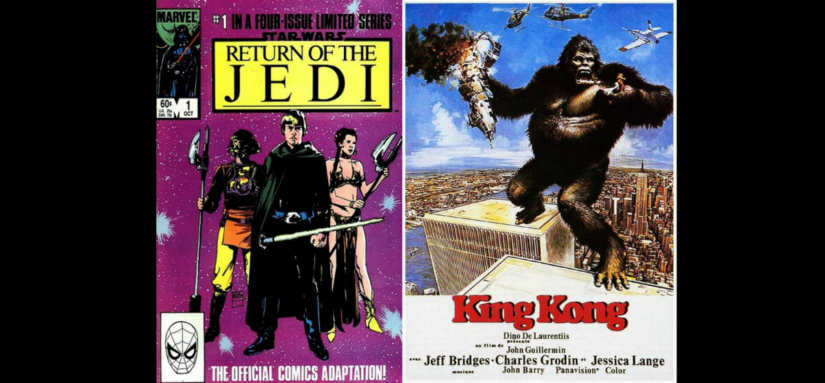

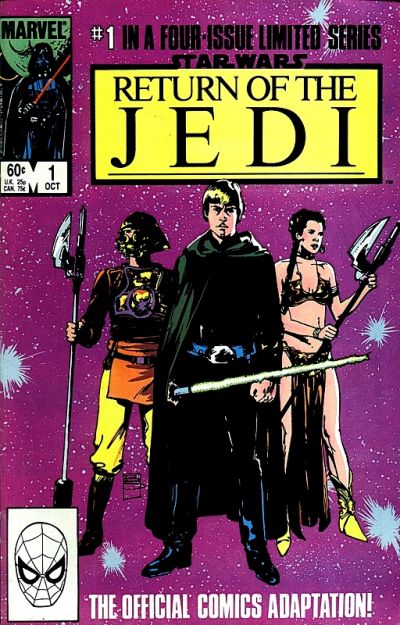
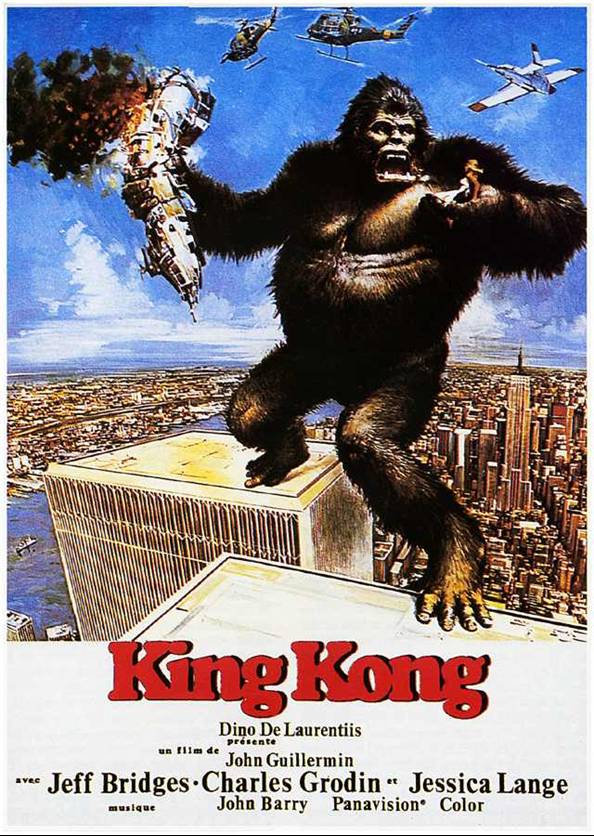
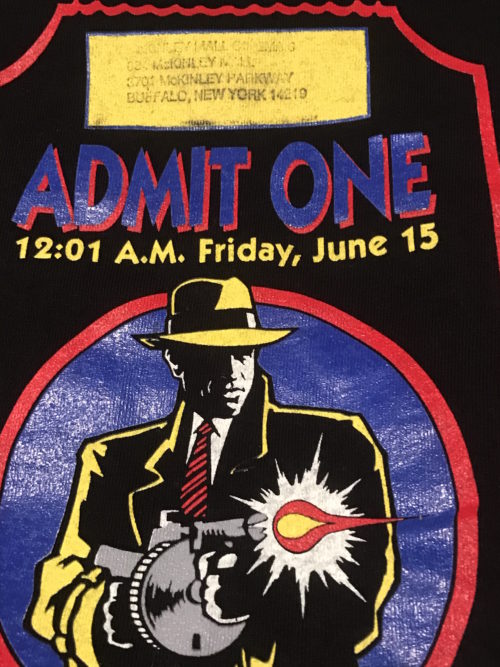
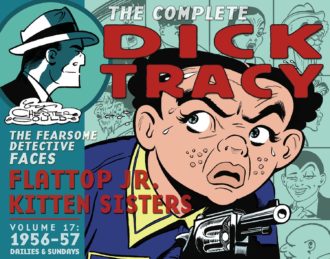
Comments are closed.